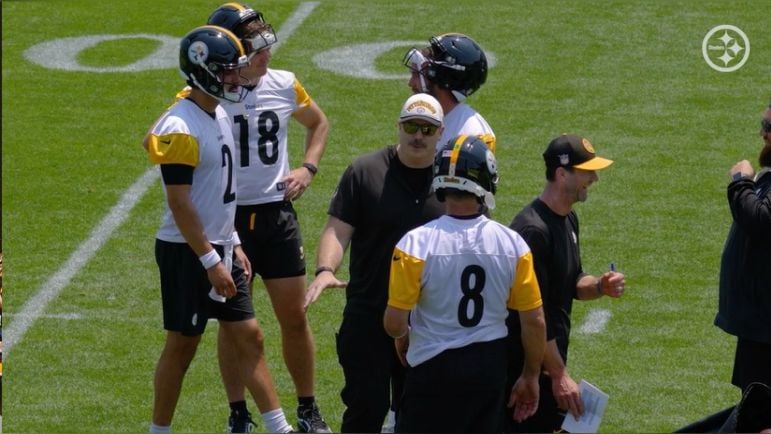The Importance of the QB-OC Relationship for the Steelers
One relationship that will significantly impact the Pittsburgh Steelers’ success is between quarterback Aaron Rodgers and offensive coordinator Arthur Smith. The synergy—or lack thereof—between a quarterback and offensive coordinator is crucial. The Steelers have seen various dynamics in the past: Ben Roethlisberger had conflicts with Todd Haley, formed close but potentially problematic bonds with Bruce Arians and Randy Fichtner, faced a poor fit with Matt Canada, and last season, a seemingly effective yet strained relationship with Russell Wilson and Smith.
The Nuances of Quarterback Autonomy
Debates about Wilson’s level of freedom last year may never reach a consensus, as opinions vary. The reality is that autonomy for a quarterback at the line of scrimmage is complex and layered, seldom fitting into a simple dichotomy. An NFL offense typically doesn’t operate on a single call, but instead employs a myriad of options with adjustments based on the defense’s setup. A notable example is Jon Gruden’s quarterback camp, where multiple calls integrating various adjustments based on defensive looks are a standard practice.
The Mental Demands of the Quarterback Position
This complexity underscores the mental challenges faced by quarterbacks; it’s far from just “getting under center and snapping the ball.” Different systems impose varying levels of constraints, where greater trust between the quarterback and the coordinator typically enables more freedom. Pittsburgh’s approach to this relationship will shape their on-field effectiveness.
Quarterback Dynamics in Pittsburgh’s 2024 Season
In 2024, Justin Fields operated under a restrictive framework, tasked with game management rather than being a playmaker. In contrast, Russell Wilson had more leeway, which diminished towards the season’s end. Noteworthy contrasts were observed in his performances against the Cincinnati Bengals; the first game allowed for more strategic checks than the second.
Situational Freedom and Team Dynamics
However, much about a quarterback’s freedom hinges on situational factors—score, down, opponent, and overall game strategy. These variables complicate any straightforward analysis of a quarterback’s autonomy within their given scheme.
Looking Ahead: Rodgers and Smith’s Collaboration
What ultimately matters is how Rodgers and Smith collaborate moving forward. While challenges such as Rodgers’ unfamiliarity with the offense—developed with him in mind—may pose difficulties, there are signs for optimism. Unlike Wilson, who struggled with injuries and continuity last season, Smith now has a year’s experience with the organization, fostering trust and operational freedom within the offense.
Conclusion: The Road Ahead for the Steelers
The relationship between Rodgers and Smith is still developing, characterized by two strong personalities navigating a one-year partnership. Ultimately, success will dictate the narrative surrounding their collaboration. In NFL dynamics, outcomes can shape perceptions rapidly, making it essential for this duo to achieve tangible results for the Steelers’ offense to thrive.



